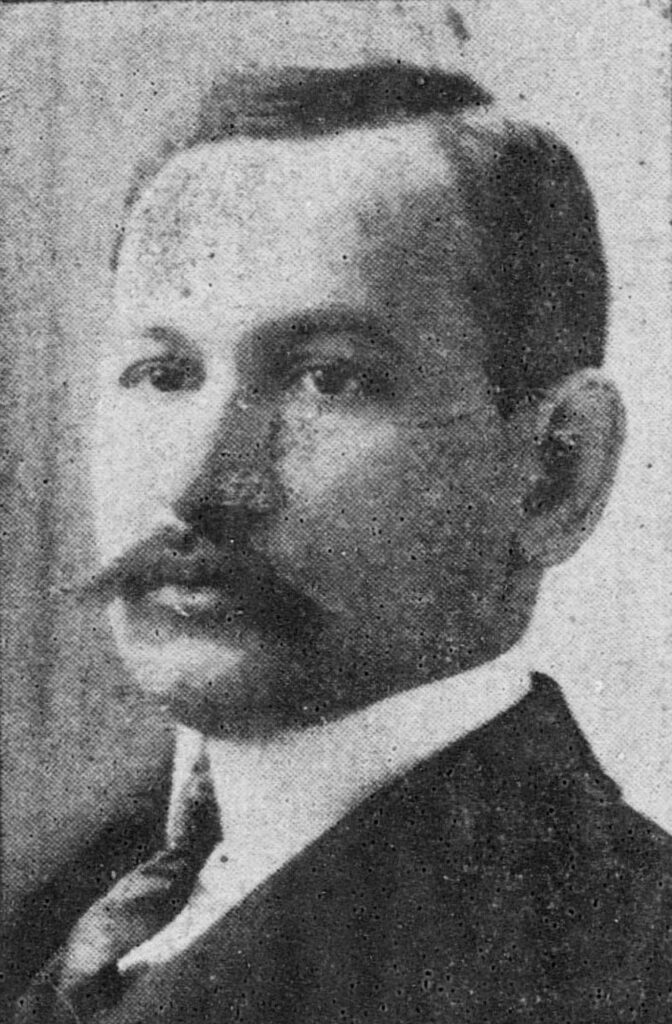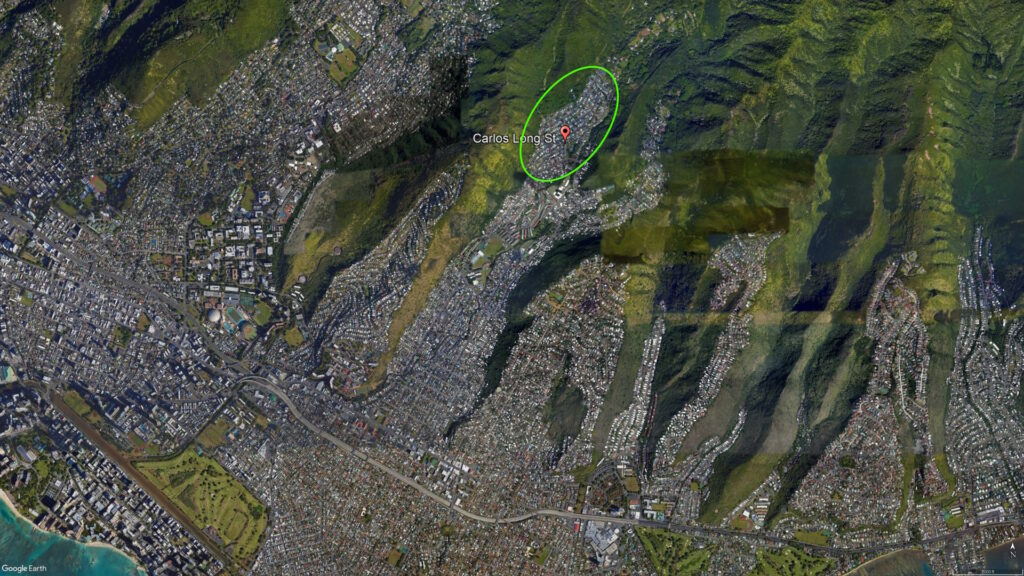From royal prince to revolutionary to Hawaiian Delegate, Jonah Kūhiō Kalaniana‘ole traveled a unique route to the United States Congress. Known primarily as “Kuhio” or by his childhood nickname “Prince Cupid,” he remains the only Member of Congress born into royalty.
Kuhio was born on March 26, 1871, in the village of Kukuiula in the Koloa District of the island of Kauai. Kuhio was the youngest of three sons of High Chief David Kahalepouli Piikoi and Princess Victoria Kinoiki Kekaulike. Princess Victoria’s sister, Kapiolani Napelakapuokakae, married into the royal line of Hawaii in 1863 when she wed King David Kalakaua.
In 1880 Kuhio’s father, David Piikoi, died and King Kalakaua appointed Kuhio’s mother governor of the island of Hawaii. The king issued a royal proclamation making Kuhio and his two brothers princes in 1883 and made them wards following their mother’s death a year later. He then incorporated Princess Kekaulike’s line into the Kalakaua dynasty.
King Kalakaua provided the best education available for his sister-in-law’s sons. After St. Alban’s School (forerunner of Iolani) and Oahu College (Punahou School), Kuhio joined his brothers at St. Matthew’s Military Academy in San Mateo, California.
In 1888 King Kalakaua sent Kuhio to Japan with the hope of setting up a marriage with the Japanese royal family. Kuhio spent nearly a year as the guest of the Japanese government, learning the art of diplomacy, but he made no effort to secure a marriage. Upon returning home, Kuhio briefly took up a position in the Ministry of Interior and Customs.
Continuing to groom Kuhio and his brother, David, to be potential heirs, Kalakaua sent them to study business in Gloucestershire, England, at the Royal Agricultural College. The pair toured Europe, greeted as equals in royal courts across the continent.
The brothers returned from England in early 1891; King Kalakaua died in January while visiting San Francisco. His sister, Liliuokalani, succeeded to the throne and set Princess Kaiulani, daughter of Kalakaua’s youngest sister, Miriam Likelike, as her heir apparent, cementing Kawananakoa and Kuhio, respectively, as presumptive heirs behind the princess.
His former ally Robert Wilcox defeated Kuhio’s brother David to become the first Hawaiian Delegate in the US Congress. Kuhio then joined Wilcox’s Home Rule Party. However, Kuhio grew disenchanted with the Home Rule Party after witnessing some of its racially charged politics firsthand.
In July 1902, the party tapped Kuhio to lead a reorganization committee. Kuhio’s proposals prioritized attracting younger moderates, but Wilcox preferred the status quo. However, a speech at the opening of the territory’s Republican convention cemented Kuhio’s choice to run as a Republican.
Former Nebraska Senator John M. Thurston declared, “You might as well send a frog to chipper at the doors of the Court of St. James for what you want as send to Washington a Delegate who is not one of or in harmony with either of the two great political parties.”
Kuhio joined the convention as a nominee for Delegate, announcing, “I am a Republican from the top of my head to the bottom of my feet.” Republicans nominated him by acclamation.
Kuhio’s campaign developed around embracing Americanism, saying at stump speeches, “Monarchy had accomplished a useful means, and democracy arises to carry on the work.” Ultimately, Republicans swept both the legislature and the delegacy. Kuhio’s victory fatally weakened the Home Rule Party.
Kuhio arrived in Washington, DC, with much exuberance, though the reality of his isolated position rapidly set in. Most Washingtonians simply referred to him as “Kuhio” or “Prince Cupid,” after his childhood nickname.
As a statutory representative – Kuhio’s Delegate position was created by federal statute rather than articulated in the Constitution – Kuhio had little influence in the House but he developed non-traditional ways to push his legislative interests.
After settling into his position, Kuhio wrestled with mainland ignorance of Hawaii. He was appointed to the traditional seats on the Territories Committee and the Post Office and Post Roads Committee, but often found himself testifying before the Merchant Marine and Fisheries or Naval Affairs panels instead.
He struggled to pass bills approving a franchise grant to expand the installation of electric lights in Hawaii. Afterward in the 59th Congress (1905–1907), he concentrated on getting money to build, repair, and maintain lighthouses on the islands and encouraging greater trade.
No one seemed to know whether funding existed for the project, so Kuhio shuffled back and forth between the Navy Department’s Lighthouse Board, Speaker Joe Cannon, and a clerk of the Appropriations Committee before discovering the funds had been suspended under the belief that Hawaii was an insular possession, like Puerto Rico or the Philippines.
Over and over the Kuhio became aware that neither congressional colleagues nor federal bureaucrats knew much about Hawaii. So he dedicated himself to educating American administrators about the islands. Much of this process happened off the House Floor. (US House)
In 1905, Hawaii served as a pit stop for congressional delegation on its way to Japan and the Philippines. Members were eager to travel abroad, though most viewed that particular delegation trip as a vacation. Still, the trip drew considerable press attention.
Shortly thereafter, Kuhio noticed the level of interest and in 1907 he began arranging delegations of his own – some referenced this as Luau Diplomacy.
For one notable excursion, Kuhio wrote to every Member of Congress, inviting them to be guests of the territory ahead of the 64th Congress (1915–1917) scheduled to open later that December. (This was the third Congressional Party to visit Hawaii as official guests; similar delegations toured the Islands in 1907 and 1909.)
The nearly 50-man 1915 delegation (27 Representatives, 10 Senators, congressional family members, staff, and a group of press), using a $15,000 disbursement from the Hawaiian territorial legislature, represented the largest group of Congressmen to visit the islands at that time.
The Islands’ welcoming committee had planned a three-week tour of the Hawaiian Islands for the Members with the hope of securing from Congress various economic support for the territory.
The party featured some of the most powerful men in the House of Representatives, including Republican Leader James Mann who, like former Speaker Cannon, hailed from Illinois.
Politicos buzzed on the mainland that Republicans had a good shot at taking back the House in the upcoming 1916 elections, and Kuhio – a Republican himself – was eager to make good with the potential new House leadership.
Mann gave Kuhio every reason to be encouraged, saying, “These islands may be assured of a continuance of prosperity.”
Laden with lei, regaled with patriotic music, and awash in florid greetings, the congressional guests at one point gave three cheers for Kuhio and sang a rousing rendition of “For He’s a Jolly Good Fellow.”
A fleet of cars whisked some Members off to their hotels to prepare for the evening’s Governor’s Ball at ‘Iolani Palace. Other Members and their families donned bathing suits and enjoyed the sand and surf at Waikiki Beach.
Member, Clarence Miller of Minnesota, brought a massive moving picture machine to record the trip. “This tour is a great idea,” Miller enthused. “They know something about Hawaii in Congress, but not nearly as much as they should know. Everybody’ll learn something this time. Something they won’t forget, either.”
Kuhio and the territorial legislature set an exhausting schedule for the congressional visitors. A ferry ride to the island of Maui featured a tour of the harbor, the lighthouse, and a cannery.
The itinerary also included stops at schools, public utilities, clubs, and private residences – places the organizers hoped would help the island secure funding for harbor and infrastructure improvements and lead to the repeal of a sugar tariff they felt had hamstrung Hawaii’s economy.
Members gradually absorbed their island education. Representative Albert Johnson of Washington met with the inspector in charge of immigration to the island, claiming the issue was of “keen interest” given his strong stance against immigration from Asian nations.
Virginia Representative Carter Glass and North Carolina Senator Lee S. Overman voiced their hopes for a thorough education in the Hawaiian sugar trade. Representative Joshua Alexander of Missouri spoke at length about his hopes for a resolution to the Islands’ transportation woes with the mainland.
Representative Swagar Sherley of Kentucky, a prominent member of the Appropriations Committee, however, had a different focus in mind. “The military and naval end of congressional appropriations will occupy much of my visit to Hawaii,” he said, specifically referencing Pearl Harbor and the installations on the island of Oahu.
The firsthand experience often helped grease the skids for legislative action afterward. “I have a few things to take up with the prince about the merchant marine and transportation facilities that come within the jurisdiction of my committee,” wrote Representative William Wilson of Illinois after one tour, “and I intend to help rectify those unreasonable sailing conditions when we get together.” (US House)
Faced with repeated stonewalling in committees, particularly on the issue of harbor improvements, Kuhio changed his tactics. In a period of increasing tensions between the US and Japan, his new idea was to tie the federal government tighter to Hawaiian infrastructure through renewed focus on military and naval bases on the islands.
He took his case before the House Naval Affairs Committee in 1908. “Gentlemen of the committee, this Government has for ten years neglected the safeguard of preparing a naval base in the mid-Pacific,” Kuhio declared. It amounted to an “inexcusable neglect” not of a special Hawaiian interest, but of a national security necessity.
Kuhio’s persistent lobbying on the issue over the course of a decade paid dividends after he led a 1919 tour for Navy Secretary Josephus Daniels and the navy board to visit Pearl Harbor. Daniels agreed with Kuhio’s assessment, and Congress responded to the secretary’s report with an appropriation of $27 million for recommended improvements and expansions.
Kuhio spent much of his time protecting Hawaii from federal policy changes that conflicted with its interests. In 1917 he testified against the passage of a bill introduced by Missouri Democrat Joshua Alexander, which would have sharply regulated wireless radio usage and traffic within the United States.
Laden with communications from Hawaiian businessmen, Kuhio argued that radio was essential to the growth and development of the islands and that new federal regulations would hurt Hawaiian economic expansion and the ability of its people to assimilate into American culture. The committee accordingly scuttled the bill.
After World War I, Kuhio pressured Congress to continue the suspension of coastwise laws that forbade foreign ships from serving as passenger steamers between Honolulu and San Francisco without the payment of a hefty fine per passenger.
Members on the House Merchant Marine and Fisheries Committee, however, were eager to roll back the wartime suspensions. But with American ships still pressed into service as military transports, Hawaiians relied primarily on foreign ships to travel to and from the mainland. (US House)
The luaus for the Congressional members worked; by the 1920s and 1930s, these Hawaiian-style parties flourished across the mainland, and even made it to the US Capitol.
Speakers of the House Nicholas Longworth and William Bankhead agreed with the Los Angeles Times: “We don’t need an excuse to enjoy the relaxed, romantic pleasure of a Hawaiian party.”






































